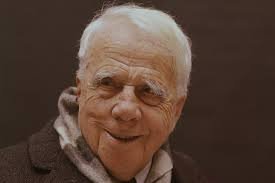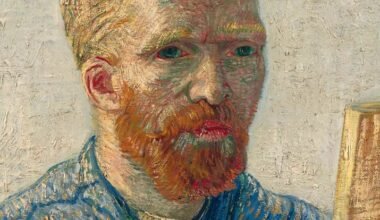Robert Frost Biography
Early Life and Birth
Robert Lee Frost was born on March 26, 1874, in San Francisco, California. He was born to journalist William Prescott Frost Jr. and Isabelle Moodie, a Scottish immigrant. His father was a teacher and later became an editor of the San Francisco Evening Bulletin. The young Robert spent his first 11 years in California until his father’s death from tuberculosis in 1885.
Family Background and Heritage
- Father: William Prescott Frost Jr. (1850-1885)
- Occupation: Journalist and teacher
- Originally from New Hampshire
- Mother: Isabelle Moodie Frost (1844-1937)
- Scottish immigrant
- Teacher by profession
- Ancestry: New England farmer stock on his father’s side and Scottish on his mother’s
Education Journey
Early Education (1885-1892)
- Attended Lawrence High School, Massachusetts
- Shared valedictorian honours with Elinor White, his future wife
- Demonstrated early talent in Latin and Greek
Higher Education
- Dartmouth College (1892)
- Attended for only two months
- Left due to homesickness and academic dissatisfaction
- Harvard University (1897-1899)
- Studied Liberal Arts
- Left without completing his degree
- Later received honorary degrees from over 40 universities
Personal Life and Marriage
- Married Elinor Miriam White on December 19, 1895
- Had six children:
- Elliott (1896-1900)
- Lesley Frost Ballantine (1899-1983)
- Carol (1902-1940)
- Irma (1903-1967)
- Marjorie (1905-1934)
- Elinor Bettina (1907-1907)
Family Tragedies
- Lost his first son Elliott to cholera in 1900
- Daughter Marjorie died of puerperal fever in 1934
- Son Carol committed suicide in 1940
- Wife Elinor died of breast cancer in 1938
- Daughter Irma was committed to a mental hospital
Career and Literary Journey
Early Career (1894-1912)
- Worked as a teacher
- Managed a farm in Derry, New Hampshire
- Published first poem “My Butterfly: An Elegy” in 1894
- Worked as a cobbler
- Taught English at Pinkerton Academy
Rise to Fame (1912-1920)
- Moved to England in 1912
- Published first two books:
- “A Boy’s Will” (1913)
- “North of Boston” (1914)
- Returned to America in 1915
- Purchased farm in Franconia, New Hampshire
- Began teaching at Amherst College
Peak Years (1920-1963)
Major Works:
- Mountain Interval (1916)
- New Hampshire (1923)
- West-Running Brook (1928)
- A Further Range (1936)
- A Witness Tree (1942)
- Steeple Bush (1947)
- In the Clearing (1962)
Awards and Honors
- Four Pulitzer Prizes for Poetry:
- 1924 – New Hampshire
- 1931 – Collected Poems
- 1937 – A Further Range
- 1943 – A Witness Tree
- Congressional Gold Medal (1960)
- Presidential Medal of Freedom (1963)
Teaching Career
- Pinkerton Academy (1906-1911)
- Taught English
- Influenced many young minds
- Plymouth Normal School (1911-1912)
- Taught psychology
- Amherst College (1916-1938)
- Various teaching positions
- Influenced future poets and writers
- University of Michigan (1921-1927)
- Poet in residence
- Harvard University (1939-1943)
- Ralph Waldo Emerson Fellow in Poetry
Writing Style and Themes
Major Themes
- Nature and rural life
- Human isolation
- Duty and work
- Decision making
- Dark side of human nature
- New England life
Poetic Style
- Traditional meter and rhyme
- Conversational tone
- Use of natural speech patterns
- Complex metaphors
- Regional dialect
- Narrative approach
Net Worth and Financial Legacy
Estimated Net Worth (at time of death in 1963)
- Approximately $5 million (adjusted for inflation)
- Sources of wealth:
- Book royalties
- Teaching positions
- Speaking engagements
- Prize money
- Farm Properties
Estate Distribution
- Left the majority of the estate to the family
- Established various literary trusts
- Donated manuscripts to university libraries
- Created educational endowments
Cultural Impact and Legacy
Influence on American Literature
- Helped establish American poetic voice
- Bridged traditional and modern poetry
- Influenced countless poets and writers
- Represented New England in literature
Continued Relevance
- Works studied in schools worldwide
- Poems frequently quoted and referenced
- Inspiration for modern poets
- Cultural icon status
Historical Context
Literary Movement
- Associated with modernism
- Maintained traditional forms
- Rejected free verse movement
- Emphasized regional identity
Political and Social Context
- Lived through both World Wars
- Great Depression era
- Cold War period
- American cultural changes
Literary Analysis and Notable Works
The Road Not Taken (1916)
One of Frost’s most celebrated poems, “The Road Not Taken” has become a cultural touchstone. The poem’s famous lines “Two roads diverged in a wood, and I— / I took the one less travelled by” are often misinterpreted as a straightforward celebration of individualism. However, Frost intended it as a gentle mockery of indecision, written with a specific friend in mind who habitually agonized over choices.
Analysis
- Complex meditation on life choices
- Use of extended metaphor
- Subtle irony in the narrator’s voice
- Four stanzas of five lines each
- Regular rhythm and rhyme scheme
- Multiple layers of meaning
Stopping by Woods on a Snowy Evening (1923)
This beloved poem showcases Frost’s ability to create profound meaning from simple observations. The poem’s final lines “And miles to go before I sleep / And miles to go before I sleep” have become deeply embedded in American cultural consciousness.
Technical Elements
- Perfect rhyme scheme
- Iambic tetrameter
- Natural speech patterns
- Visual imagery
- Multiple interpretations
- Spiritual undertones
Mending Wall (1914)
This poem explores the theme of boundaries between people, both physical and metaphorical. The famous line “Good fences make good neighbours” has entered common usage, though its meaning in the poem is more nuanced than typically understood.
Themes
- Tradition versus progress
- Human relationships
- Barriers and connections
- Rural New England life
- Question of necessity
- Cultural divisions
Writing Process and Methodology
Daily Routine
- Wrote late at night into early morning
- Preferred absolute quiet
- Used pocket notebooks for initial drafts
- Revised extensively
- Read poems aloud during composition
- Often worked on multiple pieces simultaneously
Inspiration Sources
- New England landscape
- Rural farm life
- Natural phenomena
- Human relationships
- Local characters
- Personal experiences
- Family dynamics
- Regional dialects
Public Speaking and Performances
Notable Appearances
- John F. Kennedy’s inauguration (1961)
- Read “The Gift Outright”
- The first poet to read at a presidential inauguration
- Modified the poem for the occasion
- Memorable performance despite harsh weather
Lecture Circuit
- Extensive university tours
- A popular speaker at literary events
- Known for wit and humour in presentations
- Often combined readings with commentary
- Developed devoted following
- Influenced younger generations
Political and Social Views
Political Stance
- Generally conservative
- Supported individual liberty
- Skeptical of government programs
- Valued traditional values
- A complex view of progress
- Emphasized regional identity
Social Commentary
- Subtle critique of modernization
- Defence of rural values
- Concern for community bonds
- Interest in human nature
- Commentary on American society
- Exploration of isolation
Influence on Modern Literature
Impact on Poetry
- Revolutionized narrative verse
- Influenced conversational style
- Demonstrated power of regional voice
- Balanced tradition and innovation
- Showed the importance of accessibility
- Created enduring poetic forms
Literary Legacy
- Established new poetic direction
- Influenced countless writers
- Created lasting cultural impact
- Bridged literary movements
- Preserved regional traditions
- Advanced American poetry
Personal Relationships
Friendship with Edward Thomas
- Met in England (1913-1915)
- Deep literary connection
- Mutual influence on work
- Tragic end with Thomas’s death in WWI
- The lasting impact of Frost’s poetry
- The subject of several memorial poems
Literary Circles
- Connection to Ezra Pound
- Relationship with Amy Lowell
- Interactions with T.S. Eliot
- Influence on Younger Poets
- Role in the Literary Community
- Mentorship of emerging writers
Academic Career Details
Teaching Philosophy
- Emphasis on practical knowledge
- Focus on student creativity
- Integration of life experience
- Importance of oral tradition
- Value of memorization
- Connection to nature
Notable Students
- Several became famous poets
- Many became educators
- Influenced multiple generations
- Created lasting networks
- Maintained correspondence
- Supported emerging talent
Publications and Editions
Major Collections
Detailed publication history of significant works:
A Boy’s Will (1913)
- First published collection
- Written in England
- Traditional lyric poems
- Nature themes dominant
- Personal reflections
- Early style development
North of Boston (1914)
- Breakthrough collection
- Dramatic narratives
- Character-driven poems
- New England settings
- Psychological depth
- Mature style emerging
Additional Legacy Elements
Physical Memorials
- The Frost Farm in Derry, NH
- The Stone House Museum in South Shaftsbury, VT
- The Robert Frost Trail in Massachusetts
- Various university buildings and libraries
- Historical markers and plaques
- Academic centers and programs
Cultural Impact
- Influence on American education
- Presence in popular culture
- Impact on the environmental movement
- Role in national identity
- Contribution to regional pride
- Lasting philosophical influence
Archives and Collections
- Major holdings at various universities
- Personal papers and manuscripts
- Correspondence collections
- Recorded readings and lectures
- Photographic archives
- Memorabilia and artifacts
Frequently Asked Questions (FAQ)
1. What is Robert Frost’s most famous poem?
“The Road Not Taken” (1916) is widely considered Frost’s most famous poem, though “Stopping by Woods on a Snowy Evening” is also extremely well-known.
2. How many Pulitzer Prizes did Robert Frost win?
Robert Frost won four Pulitzer Prizes for his poetry collections (1924, 1931, 1937, and 1943).
3. Where did Robert Frost live most of his life?
Although born in San Francisco, Frost lived most of his life in New England, particularly in New Hampshire and Vermont.
4. Did Robert Frost have any children?
Yes, Frost had six children with his wife Elinor: Elliott, Lesley, Carol, Irma, Marjorie, and Elinor Bettina.
5. What was Robert Frost’s educational background?
Frost attended Dartmouth College briefly and studied at Harvard University for two years but never completed a formal college degree.
6. When did Robert Frost die?
Robert Frost died on January 29, 1963, in Boston, Massachusetts, at the age of 88.
7. What was Robert Frost’s first published poem?
“My Butterfly: An Elegy” was his first professionally published poem, appearing in The Independent in 1894.
8. Did Robert Frost teach?
Yes, Frost taught at several institutions including Pinkerton Academy, Amherst College, and the University of Michigan.
9. What awards did Robert Frost receive besides the Pulitzer Prize?
He received the Congressional Gold Medal (1960) and the Presidential Medal of Freedom (1963), among many other honours.
10. Was Robert Frost married?
Yes, he married Elinor White in 1895, and they remained married until she died in 1938.
Key Dates in Robert Frost’s Life
- 1874: Born in San Francisco
- 1885: Moved to Massachusetts after father’s death
- 1892: Graduated from Lawrence High School
- 1894: First poem published
- 1895: Married Elinor White
- 1912: Moved to England
- 1915: Returned to America
- 1924: Won first Pulitzer Prize
- 1938: Wife Elinor died
- 1963: Died in Boston
This comprehensive biography of Robert Frost provides detailed insights into his life, work, and legacy. His contributions to American literature and poetry continue to influence readers and writers worldwide, making him one of the most significant poets of the 20th century.






